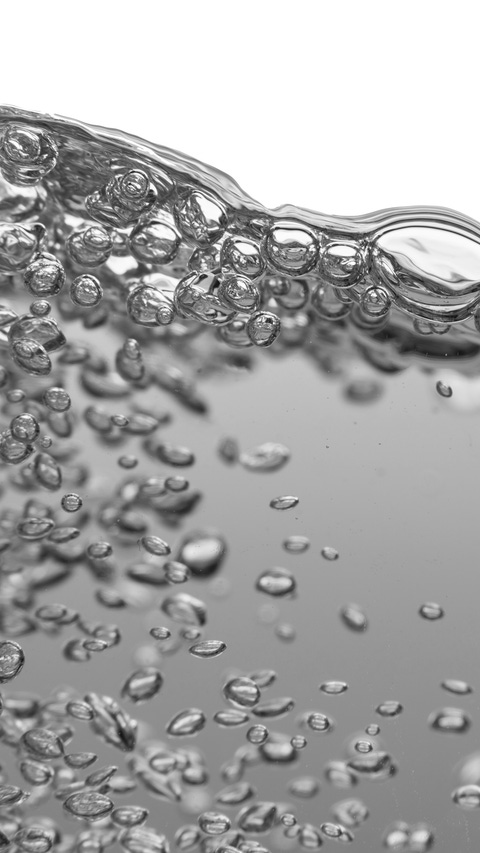Effective Use of Defoamers in the Pharmaceutical Manufacturing Process
Effective Use of Defoamers in the Pharmaceutical Manufacturing Process
Blog Article
Picking the Right Defoamer for Your Certain Application Requirements
Picking the suitable defoamer for particular application demands is a nuanced procedure that requires mindful factor to consider of multiple aspects, such as the foam operating, tool, and type problems. Recognizing the nuances of defoamer efficiency-- including speed and perseverance-- while likewise representing governing and environmental aspects is essential. In addition, taking part in tests and talking to makers can supply important insights. Nonetheless, navigating these complexities can be overwhelming, and the repercussions of an inadequate choice might be considerable. What approaches can be used to guarantee an ideal option?
Comprehending Foam Development
Foam development happens when gas is trapped within a fluid, developing a steady structure of bubbles. This phenomenon can significantly impact different commercial procedures, specifically in fields such as food manufacturing, pharmaceuticals, and wastewater therapy. The visibility of foam can hinder mixing, decrease item quality, and also cause functional inadequacies.
Foam commonly develops due to a combination of variables, including surface-active representatives, agitation, and the features of the fluid stage. Surfactants lower the surface area stress of the fluid, facilitating the development of bubbles that can stabilize and coalesce. Frustration, whether from mechanical mixing or gas introduction, enhances bubble development, resulting in enhanced foam quantity.
Recognizing the auto mechanics of foam development is essential for industries aiming to optimize their processes. By recognizing the specific conditions that advertise foam generation, organizations can carry out methods to minimize its effects. This knowledge prepares for selecting suitable defoaming agents that properly target the one-of-a-kind challenges positioned by foam in various applications. Subsequently, a detailed understanding of foam formation is important for boosting efficiency and keeping item honesty throughout different markets.
Types of Defoamers Available
Different kinds of defoamers are readily available to attend to the obstacles posed by foam in commercial applications. defoamers. Extensively classified, defoamers come under 3 groups: silicone-based, non-silicone-based, and all-natural defoamers
Silicone-based defoamers are renowned for their effectiveness and stability across a wide variety of temperature levels and pH levels. They are usually made use of in applications where strong foam suppression is required, such as in adhesives, paints, and coatings. Their reduced surface area stress permits rapid foam collapse.
Non-silicone-based defoamers, frequently made from natural substances, provide an alternative for applications conscious silicone deposits. These defoamers can be more separated into polyether and ester kinds, each customized to meet specific formula needs. Non-silicone defoamers are often made use of in food processing and personal treatment items as a result of their compatibility with numerous formulas.
Natural defoamers, obtained from plant or pet sources, are getting grip due to their environmentally friendly profile. These items are specifically appealing in applications where regulative conformity and sustainability are extremely important, such as in agrochemicals and biotechnology.
Selecting the ideal kind of defoamer is vital for optimizing performance and making sure compatibility with certain applications.
Secret Application Considerations
When picking a defoamer, it is important to think about the certain application needs to make sure optimal efficiency. defoamers. Different sectors have unique needs, such as food processing, drugs, or wastewater treatment, and each application may call for unique defoaming residential or commercial properties
Key aspects to examine include the medium in which the defoamer will be utilized, whether it is water-based, oil-based, or a mix thereof. The temperature and pH degrees of the application can likewise greatly influence the effectiveness of a defoamer. Furthermore, compatibility with other chemicals present in directory the system is vital to avoid damaging reactions that might endanger efficiency.
Another essential factor to consider is the lathering habits of the particular system. Understanding whether the foam develops promptly or gradually can guide the choice of a defoamer that targets the origin properly. The preferred rate of defoaming can influence the choice, as some applications require quick activity while others may tolerate slower defoaming procedures.
Finally, regulative and environmental considerations need to not be forgotten, particularly in industries with strict conformity requirements. Selecting a defoamer that lines up with these elements makes sure both performance and safety and security in the application.

Performance Testing Methods
Assessing the performance of a defoamer needs an organized strategy to testing that precisely gauges its efficiency in certain applications. Numerous efficiency testing methods can be utilized to establish the optimum defoamer for an offered formula.
One typical approach is the bubble examination, which evaluates the defoamer's ability to reduce foam volume in time. This test involves producing a stable foam and then adding the defoamer to observe the price of foam collapse. An additional method is the vibrant foam examination, where foam is generated under regulated problems to mimic real-world application circumstances. This strategy supplies understandings right into how the defoamer executes under differing shear problems.

Ultimately, selecting the appropriate performance screening approach depends upon the particular application and the kind use this link of foam being attended to. Each method provides important information that can assist formulation changes and boost the effectiveness of the defoamer in functional applications.
Best Practices for Choice


Next, take into consideration the defoamer's efficiency in terms of speed of activity and persistence. A quick-acting defoamer may be needed for procedures where fast foam reductions is critical, while an extra consistent formula could be required for long term foam control. Furthermore, review the ecological effect of the defoamer, including its biodegradability and any regulative compliance needs.
Conduct trials with selected defoamers to establish their efficiency in real-world problems. This step is vital to verify that the chosen product meets efficiency expectations. Finally, seek advice from manufacturers or suppliers for technological assistance and support, as they can give useful understandings right into product formulas and application methods. By sticking to these finest techniques, you can improve foam control efficiency and make sure the long life of your procedures.
Conclusion
In recap, selecting the proper defoamer necessitates a thorough analysis of various elements, including foam kind, tool, operating conditions, and ecological factors to consider. Comprehending the one-of-a-kind attributes of foam development and the offered defoamer alternatives is you can find out more crucial. Additionally, employing efficient performance screening approaches and adhering to ideal practices during the selection procedure will certainly boost the probability of attaining ideal defoaming results. Inevitably, a knowledgeable option method will certainly attend to details application needs and minimize foaming difficulties properly.
Selecting the appropriate defoamer for specific application requirements is a nuanced procedure that requires careful consideration of several variables, such as the foam type, tool, and operating problems.Choosing the ideal defoamer is essential for achieving optimum efficiency in foam control applications. A quick-acting defoamer might be necessary for processes where rapid foam suppression is important, while a much more persistent formulation could be needed for prolonged foam control.In recap, picking the ideal defoamer demands a detailed examination of various elements, consisting of foam kind, medium, operating conditions, and environmental factors to consider. Comprehending the unique features of foam development and the readily available defoamer alternatives is critical.
Report this page